How Seed Trays Shape Root Growth: Preventing Root Bound Seedlings
2025-07-26 21:18:50
A healthy garden starts with healthy roots. Yet one of the most overlooked tools in seed-starting success is something simple: your seed trays.
Whether youre growing tomatoes, herbs, or native perennials, the shape, depth, and structure of your seed trays directly influence how your seedlings form roots—and whether they become root bound before transplanting.
In this article, we’ll explore how seed tray design affects root development, what causes root binding, and how to choose the best tray style to avoid this common problem. Because strong roots equal strong plants—and it all starts with the tray.
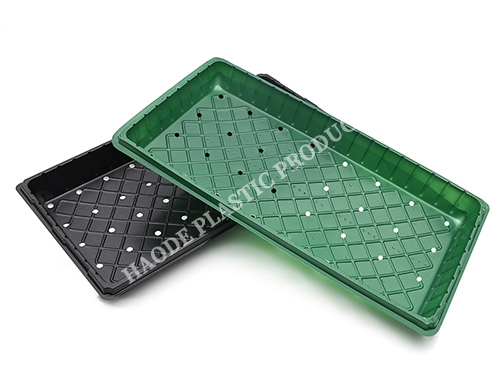
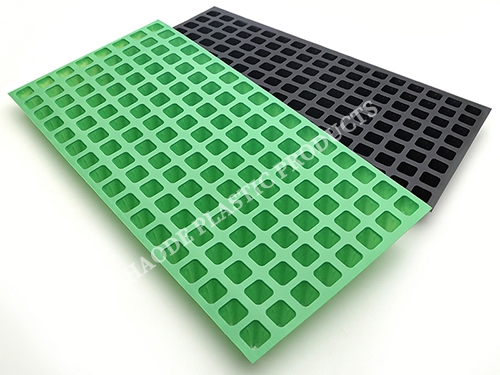
What Is “Root Bound”—and Why Does It Matter?
When a seedling stays in a container too long—or in the wrong container—its roots begin circling the inside edges of the tray cell. This condition, known as being root bound, leads to:
·Stunted growth after transplanting
·Poor water and nutrient absorption
·Lower resistance to stress and pests
·Slow recovery or even transplant shock
Root binding is most common in shallow or overly compact seed trays, especially those made from poor-quality materials that don’t allow for good air or moisture flow.
How Seed Trays Influence Root Development
Not all seed trays are equal. From depth and cell spacing to airflow and drainage, several factors in tray design shape how roots grow—and whether they grow properly.
1. Tray Depth Matters
Shallow trays might work for fast-growing greens, but deeper cells give roots the vertical space they need to grow strong before hitting physical barriers. Trays with at least 2–3 inches of depth are ideal for most vegetables and flowers.
If roots hit the bottom too soon, they begin curling or tangling—starting the root-bound cycle before you even notice.
2. Cell Shape and Taper Angle
Trays with tapered or cone-shaped cells encourage roots to grow downward in a natural direction. Avoid trays with square or vertical walls, as these can trap roots in corners, encouraging circling or matting.
Some air-pruning seed trays even have open bottoms or ribbed sides that direct roots downward and naturally prune excess growth—resulting in stronger, more fibrous root systems.
3. Drainage and Airflow
Good seed trays include multiple drainage holes or vent channels to prevent oversaturation. Excess water is a major contributor to root rot and can lead to oxygen-starved, malformed roots.
Air circulation is just as important. Roots need both moisture and oxygen, and trays made from rigid, high-quality plastic allow for better airflow than silicone or compostable trays, which can retain too much water.
The Problem with Inferior Seed Trays
Flimsy or poorly designed trays—often made of thin plastic or low-grade fiber—tend to:
·Warp under moisture
·Crack after a few uses
·Retain too much water
·Lack proper drainage
These trays often lead to uneven root development and increased risk of root bound seedlings. And while biodegradable trays may sound eco-friendly, they typically don’t allow for reusability or precise control over drainage, making them a poor long-term investment for serious growers.
That’s why reusable, high-quality plastic seed trays remain the most reliable option for supporting root health from day one.
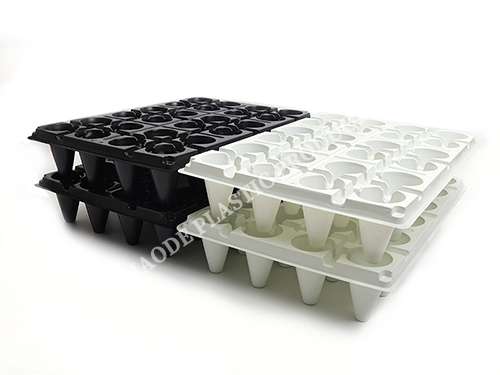
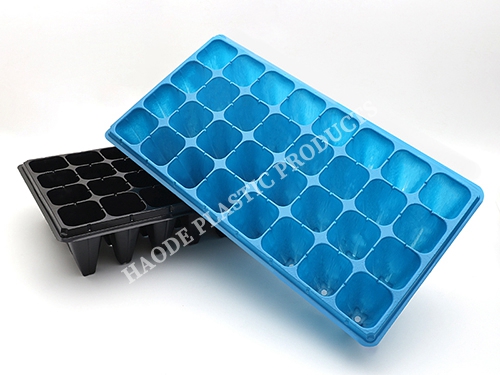
How to Prevent Root Bound Seedlings: Practical Tips
Beyond tray selection, here are a few hands-on strategies to prevent root-bound issues during seed starting:
·Transplant at the right time: Don’t leave seedlings in trays longer than necessary. Monitor root development weekly.
·Bottom-water, don’t flood: Encourage downward root growth by watering from below instead of over the top.
·Use appropriately sized trays: Match tray size to plant growth rate. For tomatoes or peppers, use deeper trays. For lettuce or microgreens, shallower cells are fine.
·Label and rotate trays: Avoid “forgotten” seedlings by clearly marking planting dates and rotating your tray positions regularly.
Combined with the right seed tray design, these techniques ensure your plants develop vigorous, transplant-ready roots without tangling or damage.
Why High-Quality Plastic Seed Trays Are the Best Long-Term Solution
There are many seed tray materials on the market, from silicone and compostable fiber to aluminum and biodegradable pulp. While each has its place, few match the performance and durability of rigid plastic seed trays—especially when it comes to shaping root health.
Here’s why our customers prefer them:
·Rigid structure maintains consistent cell shape and depth
·Multiple drainage holes prevent overwatering
·UV- and moisture-resistant for multi-season use
·Cell tapering and sizing options for different crops
·Stackable design for easy storage and greenhouse efficiency
Unlike throwaway trays or high-cost alternatives, our reusable plastic seed trays are engineered for root health and grower convenience.
Conclusion: Healthy Roots Start with the Right Tray
Don’t let root binding sabotage your seedlings before they ever reach the garden. From depth and shape to airflow and drainage, your choice of seed trays plays a crucial role in early plant health.
Invest in trays that are built to support strong, natural root growth—and avoid the costly setbacks of tangled, root-bound seedlings. Because great gardens start below the surface.
Ready to Grow Stronger Roots? Start with Better Seed Trays.
If youre tired of cracked trays, tangled roots, and transplant failures, its time to upgrade to seed trays designed with root health in mind.
Our premium reusable plastic seed trays are engineered to give your seedlings the space, structure, and environment they need to thrive—season after season.
Explore our full collection today and grow with confidence.
References
GB/T 7714:McGrath D, Henry J, Munroe R, et al. Effect of propagation tray design on early stage root development of Acer rubrum, Quercus rubra, and Populus tremuloides[J]. Journal of Environmental Horticulture, 2017, 35(1): 35-40.
MLA:McGrath, Darby, et al. "Effect of propagation tray design on early stage root development of Acer rubrum, Quercus rubra, and Populus tremuloides." Journal of Environmental Horticulture 35.1 (2017): 35-40.
APA:McGrath, D., Henry, J., Munroe, R., & Agro, E. (2017). Effect of propagation tray design on early stage root development of Acer rubrum, Quercus rubra, and Populus tremuloides. Journal of Environmental Horticulture, 35(1), 35-40.

The CNC Seed Braiding Machine is a high-precision, fully automated agricultural equipment s...
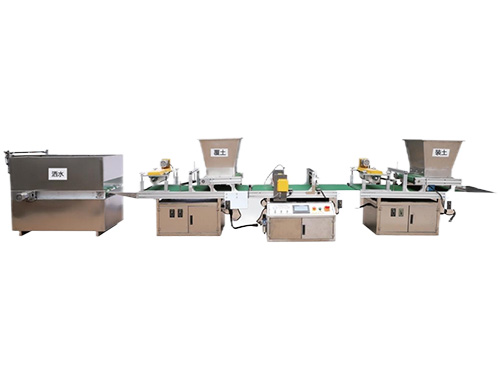
It adopts electrical integration and can be started by pressing the fully automatic button ...
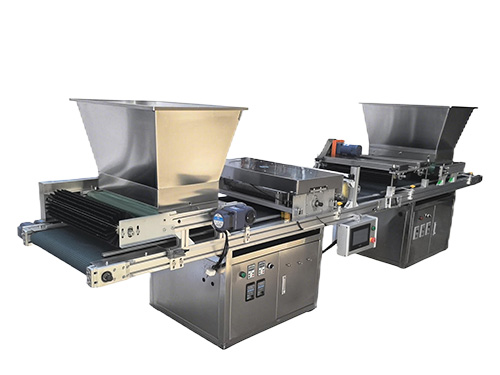
The XP750 seeder has stable performance, excellent product quality, simple and convenient o...
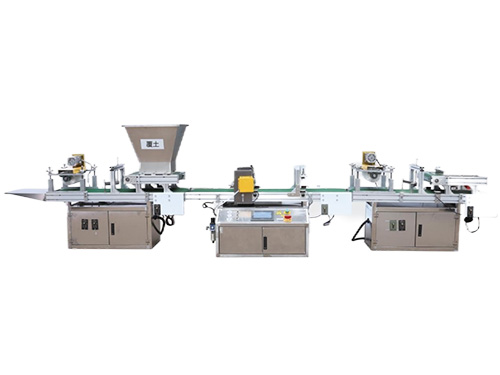
It adopts electrical integration and can be started by pressing the fully automatic button ...



